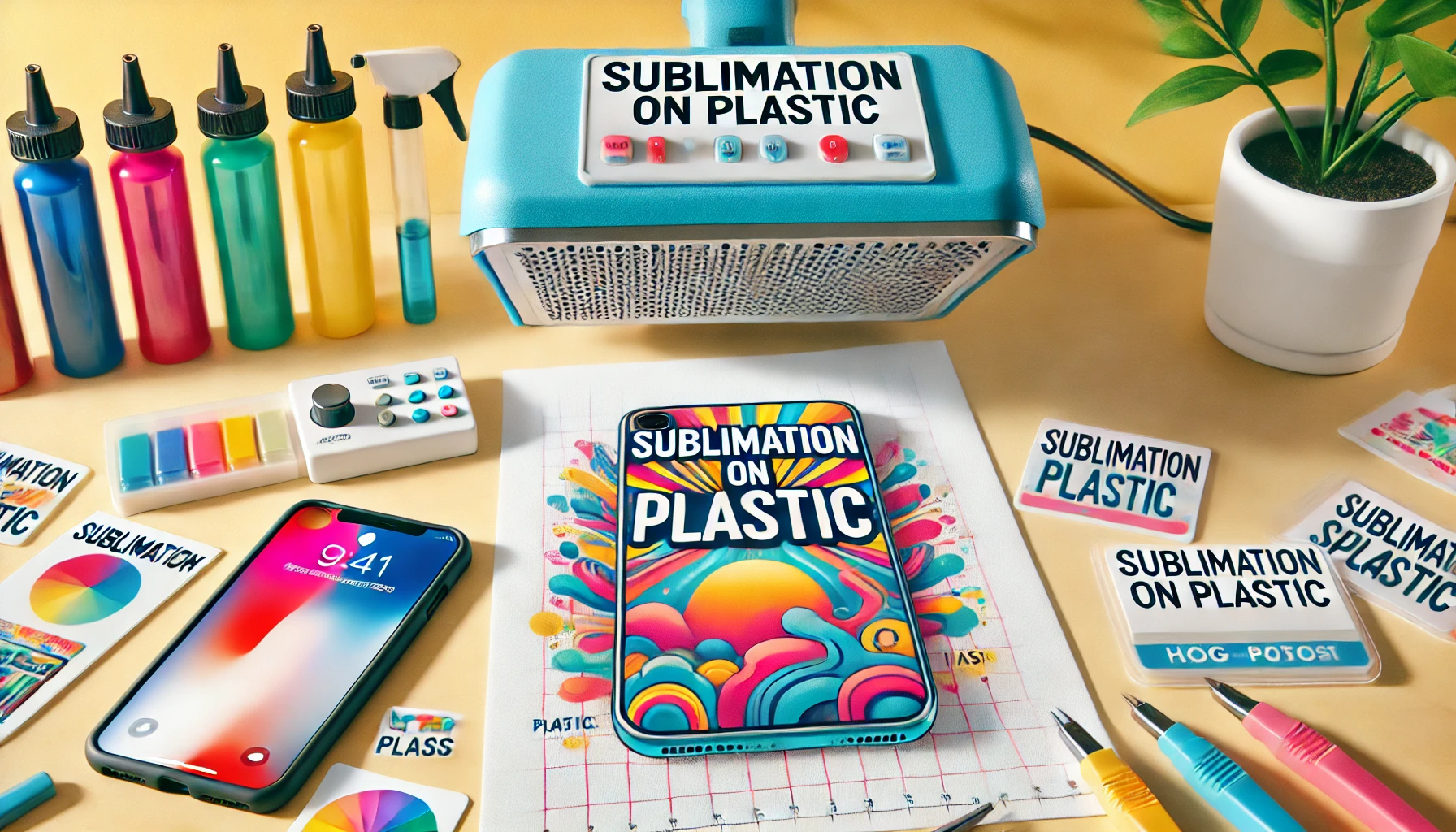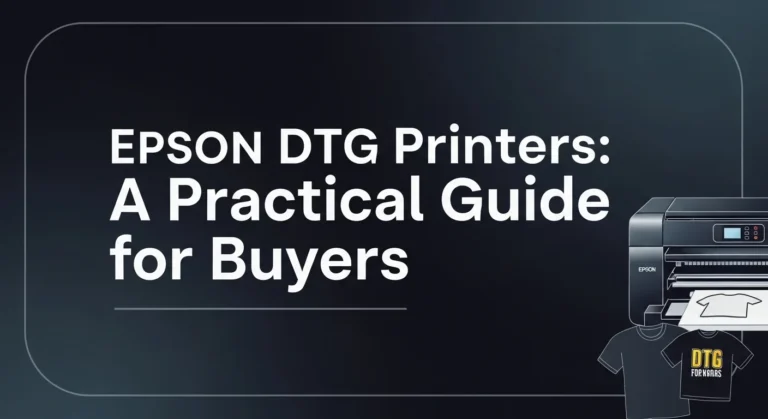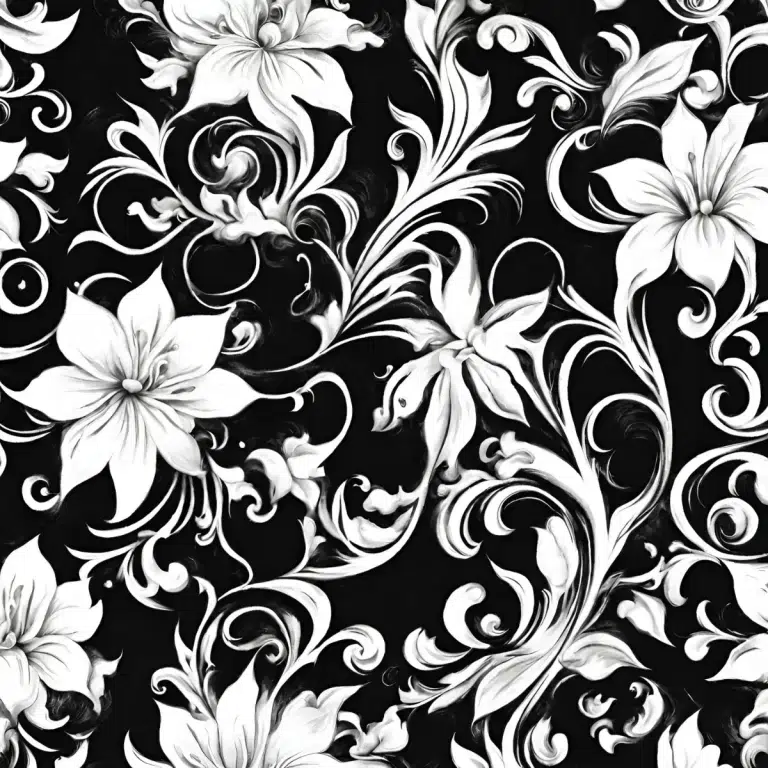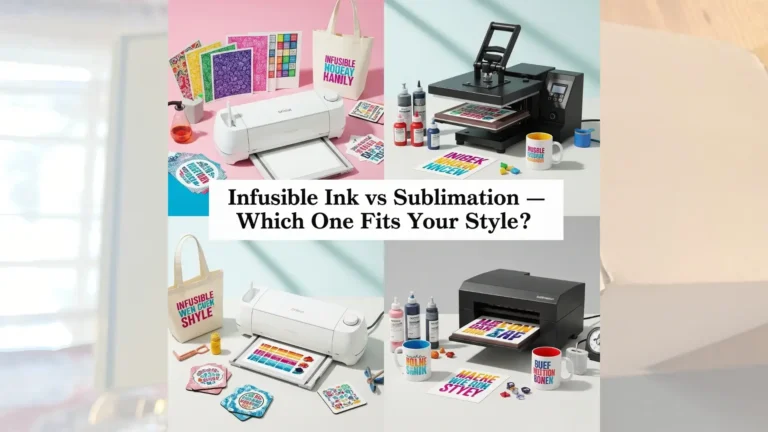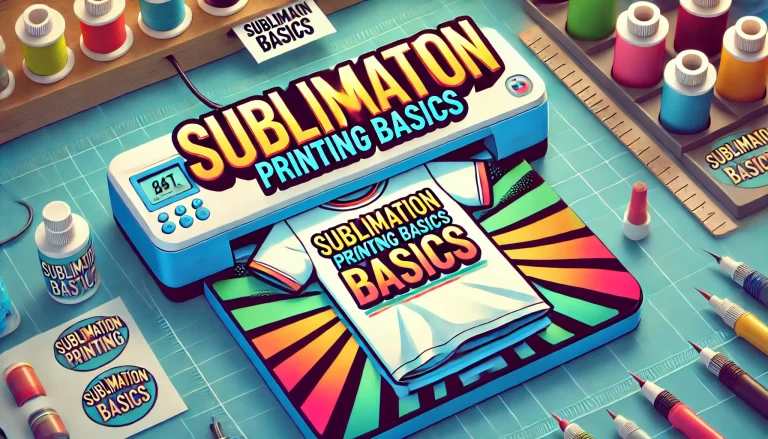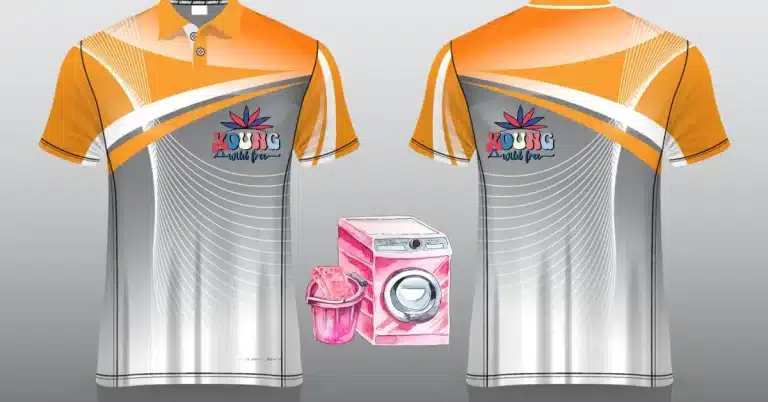Sublimation on Plastic: Is It Possible? (And How to Do It!)
Sublimation on plastic works only with specially coated or polyester-based plastics. The heat and pressure turn the ink into gas, bonding it with the surface.
Common items include phone cases, keychains, and signage. Standard plastics won’t hold sublimation ink unless treated. Always check material compatibility before printing to avoid fading or poor adhesion.
Learn how to sublimate on plastic with our complete guide. From materials needed to step-by-step instructions, we cover everything you need to know to create beautiful sublimated plastic products. Find tips, troubleshooting advice, and inspiration for your next project.
Quick Overview
Sublimation on plastic is a creative process that allows you to transfer vibrant designs onto plastic surfaces.
You’ll also find troubleshooting advice for common issues and inspiring examples to spark your creativity. If you’re a beginner or looking to refine your technique, this guide will help you successfully sublimate on plastic.
Is Sublimation on Plastic Possible?
Yes, it is possible and has become increasingly popular in various crafting and manufacturing fields. While sublimation traditionally works best on polyester-coated surfaces, advancements in technology have made it feasible to sublimate on certain types of plastic.
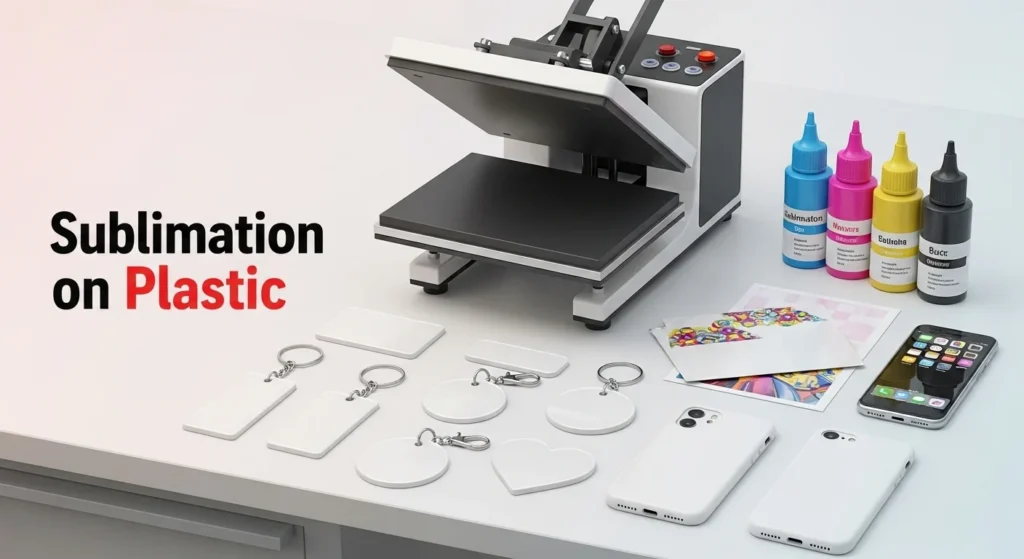
Types of Plastic Suitable for Sublimation
Not all plastics are suitable for sublimation. The best results are typically achieved with plastics that have been specially coated to accept sublimation dyes. Common plastics used for sublimation include:
- Polyester-Coated Plastics: Ideal for sublimation due to their receptive surface.
- Polypropylene: Often used to create durable, lightweight items.
- Polycarbonate: Known for its strength and clarity, it is perfect for clear, vibrant prints.
Special Considerations
When sublimating on plastic, there are a few key considerations to keep in mind:
- Heat Sensitivity: Plastics can be sensitive to high temperatures. It’s crucial to find the right balance between enough heat to transfer the dye and not too much to damage the plastic.
- Surface Preparation: Properly preparing the plastic surface is essential. Cleaning and, if necessary, applying a special coating can enhance the quality of the transfer.
- Equipment: Using the right equipment, such as a high-quality dye sublimation printer and a heat press, is vital for successful sublimation on plastic.
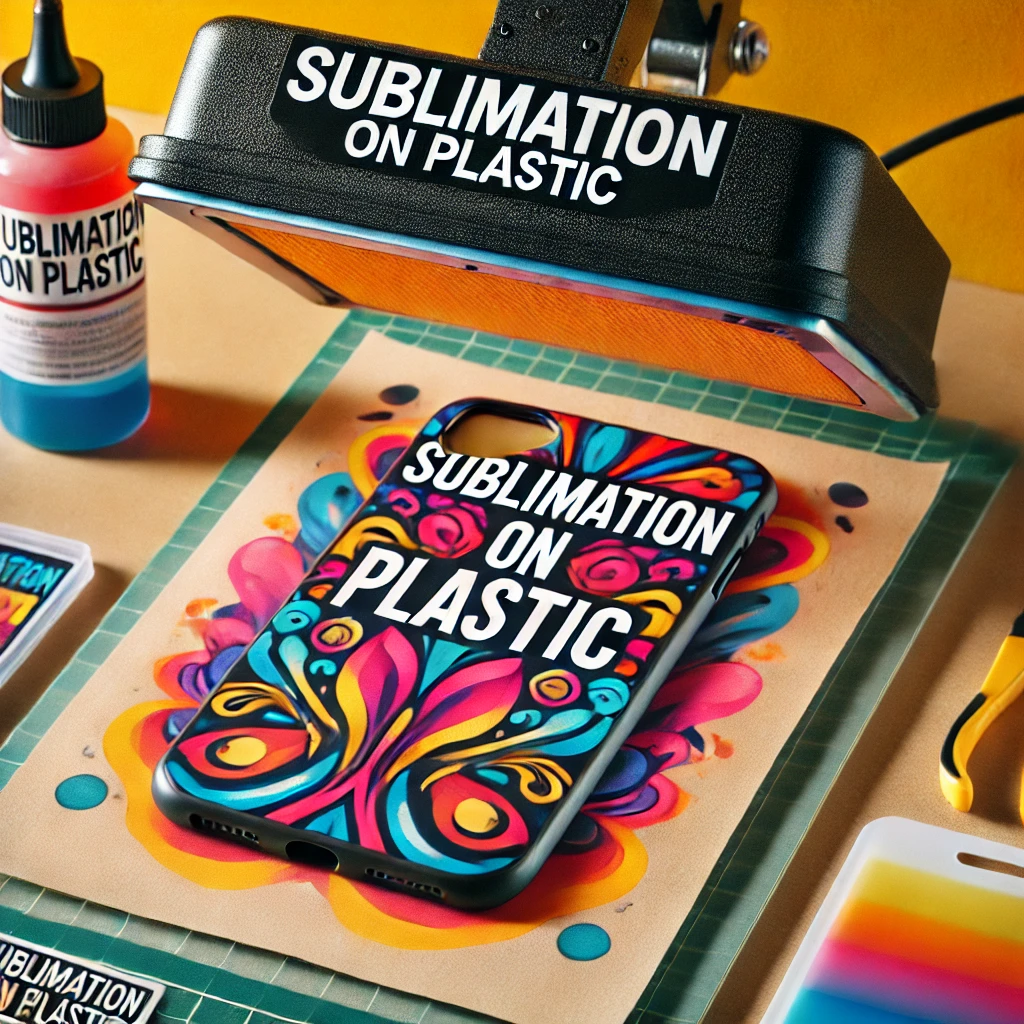
Materials Needed for Sublimating on Plastic
To successfully sublimate on plastic, you’ll need the right materials and equipment. Here’s a detailed list of what you’ll need:
1. Dye Sublimation Printer
A high-quality dye sublimation printer is essential for producing vibrant, detailed designs. These printers use special sublimation inks that turn into gas when heated and bond with the plastic surface.
2. Sublimation Inks
Sublimation inks are specifically formulated to convert from a solid to a gas without passing through a liquid state. These links are crucial for achieving the bright, durable prints associated with sublimation.
3. Sublimation Paper
Special sublimation paper is used to print your design. This paper holds the sublimation inks and releases them onto the plastic when heat is applied.
4. Heat Press Machine
A heat press machine transfers the printed design from the sublimation paper onto the plastic, applying the necessary heat and pressure to complete the sublimation process.
- Look for a heat press with adjustable temperature and pressure settings to accommodate different types of plastic.
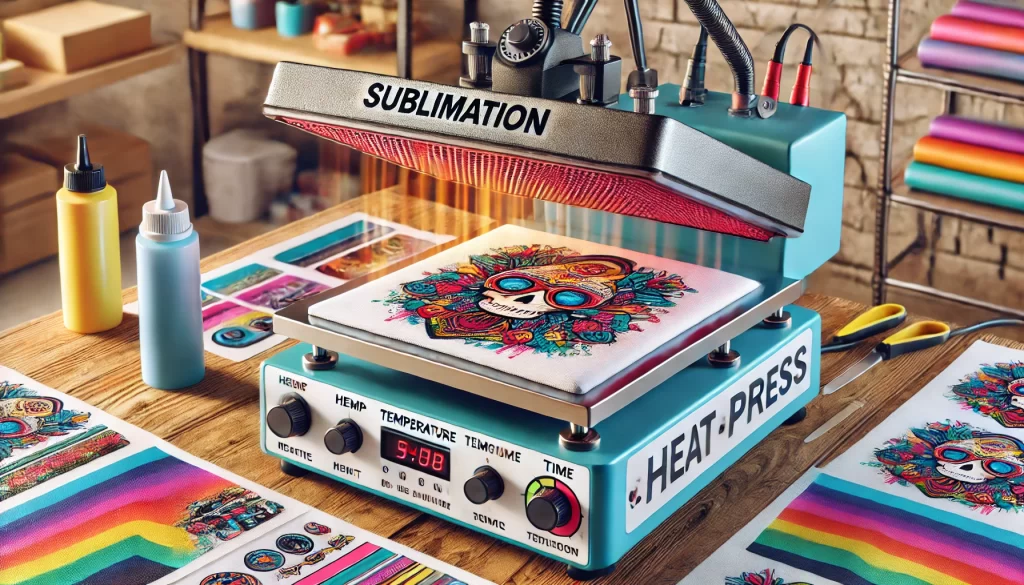
5. Plastic Blanks
You’ll need plastic items that are compatible with sublimation. These can include various types of polyester-coated plastics or specially treated plastic blanks.
- Types: Polyester-coated plastics, polypropylene, and polycarbonate.
6. Heat-Resistant Tape
Heat-resistant tape secures the sublimation paper to the plastic blank, ensuring that the design does not shift during the heat press process.
7. Protective Equipment
Safety is important when working with heat and chemicals. Make sure you have:
- Heat-resistant gloves
- Protective eyewear
- A well-ventilated workspace

Step-by-Step Guide to Sublimation on Plastic
It involves a series of precise steps to ensure the best results. Here’s a detailed guide to help you through the process:
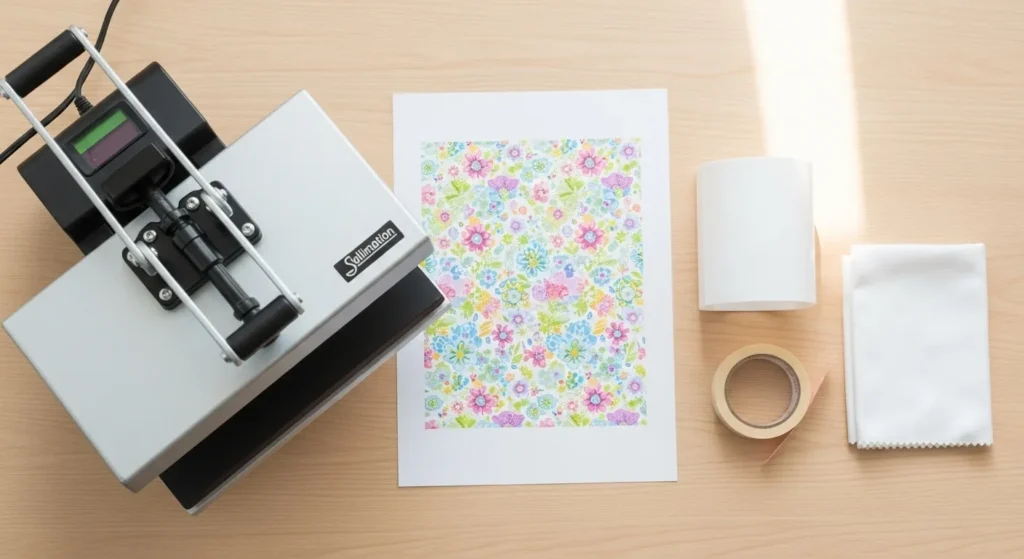
1. Prepare Your Design
- Create or Choose a Design
- Use graphic design software like Adobe Photoshop or Illustrator to create your design. Ensure it matches the size of your plastic blank.
- Mirror the Image
- Mirror your image before printing. This ensures that text and designs appear correctly once transferred.
2. Print Your Design
- Select Printer Settings
- Use a high-quality dye sublimation printer. Adjust the settings for optimal resolution and color output. Refer to printer guides like Yu, J. (2012, October 4). How to buy a printer. CNET for detailed information on printer selection and setup.
- Print on Sublimation Paper
- Load sublimation paper into the printer and print your mirrored design. Ensure the print quality is high to avoid any blurring or fading.
3. Prepare the Plastic Surface
- Clean the Plastic Blank
- Thoroughly clean the plastic blank to remove dust, oils, or residues. For best results, use a lint-free cloth and rub alcohol on it.
- Position the Design
- Place the printed sublimation paper onto the plastic blank with the design facing the plastic. Secure it with heat-resistant tape to prevent movement.
4. Heat Press the Design
- Set the Heat Press Machine
- Preheat the heat press machine to the recommended temperature (usually around 350-400°F, depending on the plastic type).
- Apply Heat and Pressure
- Place the plastic blank with the sublimation paper in the heat press. Apply firm pressure and heat for the recommended time (typically 60-90 seconds).
- Remove Carefully
- Once the time is up, carefully open the heat press and remove the plastic blank. Let it cool slightly before removing the sublimation paper.
5. Finishing Touches
- Cool Down
- Allow the plastic to cool completely to ensure the sublimation ink sets properly.
- Inspect the Finished Product
- Check for imperfections or incomplete transfers. If necessary, repeat the process or touch up small areas.
Check Video Guide Sublimation on Plastic in 15 Seconds, Quick Step by Step Guide
Troubleshooting Common Issues
Even with careful preparation, you may encounter some issues when sublimating on plastic. Here are some common problems and their solutions to help you achieve the best results:
1. Faded Colors
Cause: Insufficient heat or pressure or incorrect printer settings.
Solution:
- Ensure the heat press is set to the correct temperature (typically 350-400°F).
- Apply adequate pressure during the transfer process.
- Check your printer settings to ensure high-quality print mode is selected.
- Use high-quality sublimation inks and paper.
2. Blurry Designs
Cause: Movement of the sublimation paper during pressing or incorrect image resolution.
Solution:
- Secure the sublimation paper firmly with heat-resistant tape to prevent shifting.
- Use high-resolution images to ensure sharp prints.
- Avoid opening the heat press too quickly, which can cause the paper to move.
3. Uneven Transfers
Cause: Inconsistent heat or pressure across the plastic surface.
Solution:
- Ensure the heat press applies even pressure across the entire surface.
- Use a heat press mat or silicone pad to help distribute pressure evenly.
- Double-check that the plastic blank is completely flat and level.
4. Ghosting (Double Images)
Cause: Slight movement of the paper after the initial contact.
Solution:
- Use heat-resistant tape to secure the paper in multiple places.
- Open the heat press slowly and steadily to prevent jarring the paper.
- Ensure the design is properly mirrored before printing.
5. Incomplete Transfers
Cause: Insufficient time in the heat press or inadequate contact between paper and plastic.
Solution:
- Increase the pressing time slightly to ensure full transfer.
- Ensure there are no gaps between the sublimation paper and the plastic blank.
- Check for even pressure distribution across the press.
Examples and Inspiration
Seeing examples of sublimation on plastic can inspire your projects. Here you see creative ideas and applications to get you started:
1. Personalized Tumbler Designs
Idea: Create custom tumblers with unique designs, photos, or text. Personalized tumblers make great gifts and promotional items.
Inspiration:
- 3D sublimation tumblers featuring intricate patterns or 3D effects. These can be visually striking and offer a unique drinking experience. Sublimation Tumbler Blanks
2. Custom Phone Cases
Idea: Design personalized phone cases with artwork, family photos, or inspirational quotes. Sublimated phone cases are durable and visually appealing.
Inspiration:
- Use bold colors and high-resolution images to make your designs pop. Consider adding textures or patterns to create a more dynamic look.
3. Decorative Keychains
Idea: Create small, custom keychains with fun designs, logos, or monograms. These can be used for personal use or as branded merchandise.
Inspiration:
- Experiment with different shapes and sizes of plastic blanks. For varied effects, try using both opaque and transparent plastics.
4. Custom Signage
Idea: Design signs for homes, offices, or events. Sublimated signs can feature detailed graphics and vibrant colors.
Inspiration:
- Create signs with a mix of text and images. Consider seasonal designs or themes for specific events, such as weddings or parties.
5. Personalized ID Badges
Idea: Make custom ID badges for employees, students, or event attendees. Sublimated badges can include photos, names, and organization logos.
Inspiration:
- Ensure the designs are clear and professional. Add background patterns or colors that match the organization’s branding.
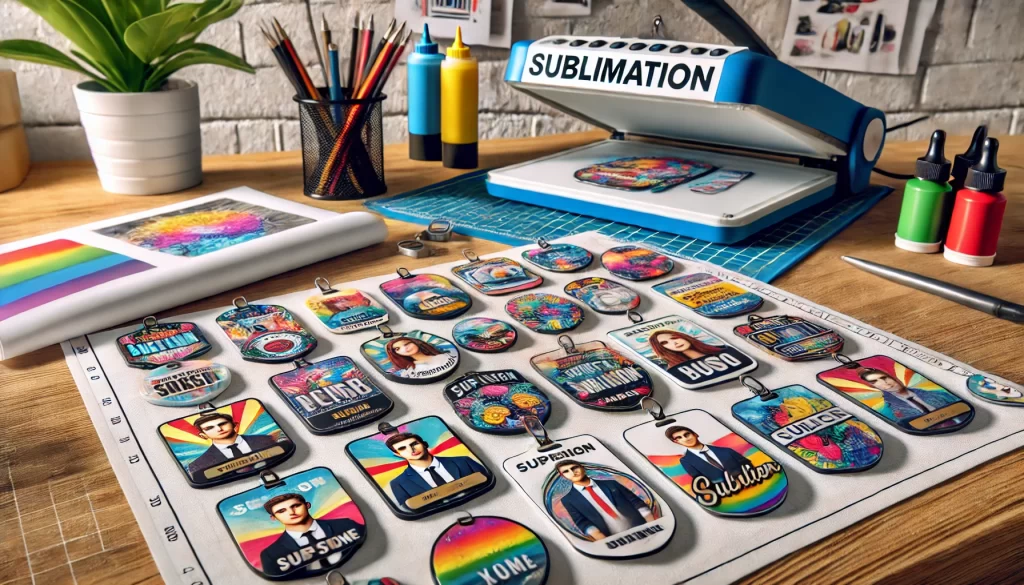
Exploring Your Creativity
The possibilities with sublimation on plastic are vast. Whether you’re creating items for personal enjoyment, gifts, or business purposes, the key is to experiment and have fun with your designs. Look for inspiration in everyday objects and think about how you can transform them with your unique touch.
Where to Buy Supplies
To start sublimating on plastic, you must source quality materials and equipment. Here’s where you can find what you need:
1. Dye Sublimation Printers
For vibrant and precise printing, a reliable dye sublimation printer is essential. Here are some trusted options:
- Epson: Known for its high-quality dye sublimation printers, which are suitable for both beginners and professionals.
2. Sublimation Inks and Paper
High-quality sublimation inks and paper are crucial for clear and long-lasting prints. Look for:
- Sublimation Paper: Specially designed to hold and transfer sublimation inks effectively.
3. Heat Press Machines
A good heat press machine ensures proper heat and pressure for successful sublimation. Consider:
- Clamshell or Swing-Away Heat Presses: These are available from various suppliers and provide even pressure for different types of plastic.
4. Plastic Blanks
You’ll need plastic items that are suitable for sublimation. These can be purchased from:
- Specialty Craft Stores: Look for polyester-coated plastics or those designed specifically for sublimation.
- Online Suppliers: Check websites that offer a range of plastic blanks, including tumblers, phone cases, and signage.
5. Additional Supplies
Don’t forget the smaller but essential items:
- Heat-Resistant Tape: To secure your sublimation paper in place.
- Protective Gear: Ensure you have heat-resistant gloves and protective eyewear for safety during sublimation.
What is Corrugated Plastic?
Corrugated plastic is a lightweight, tough material made from polypropylene. It features a fluted, or wavy, design between two thin plastic sheets, giving it strength without adding extra weight.
Think of it like cardboard, but in plastic form. You’ve likely seen it used for political signs, yard sale placards, or shipping containers.
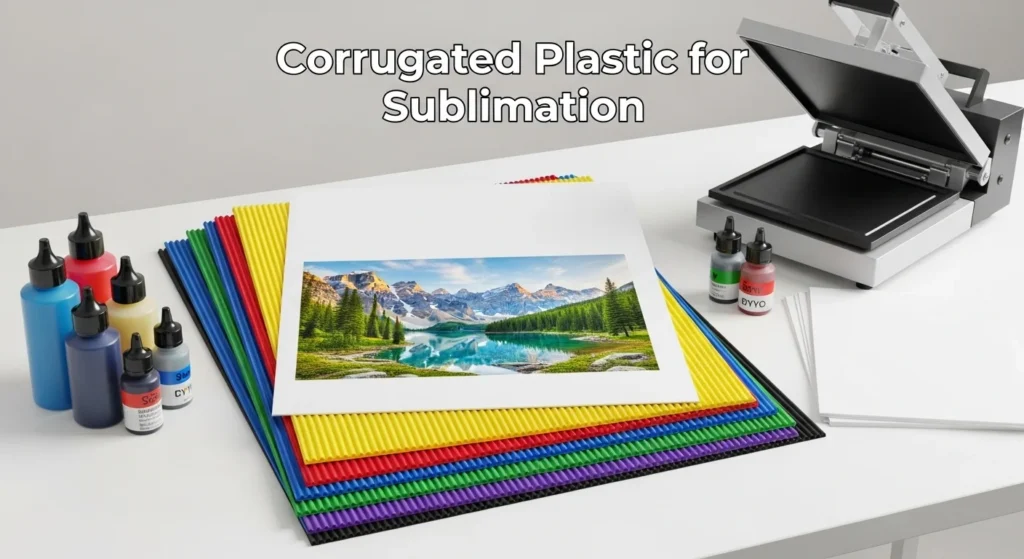
It’s non-porous, traditional sublimation methods won’t work unless you follow specific preparation steps.
Why it’s great for sublimation:
- Durability: It withstands outdoor elements like rain and sun.
- Lightweight: Easy to handle and install.
- Versatile: Available in various colors and thicknesses.
Can You Sublimate on Corrugated Plastic Directly?
The answer is no. Corrugated plastic doesn’t absorb sublimation ink like polyester fabric does. However, there’s a workaround: applying a polyester coating on the plastic surface.
Steps to Sublimate on Corrugated Plastic
- Prepare the Surface
Clean the plastic thoroughly with alcohol to remove any dust, dirt, or grease. Even a slight imperfection can affect the design’s adhesion. - Apply a Polyester Coating
Use a specially formulated polyester spray coating for non-porous surfaces. Apply an even layer across the plastic and let it dry completely. This coating allows the sublimation ink to bond to the surface. - Print Your Design
Print your design on sublimation paper using a sublimation printer and sublimation inks. Ensure the design is mirrored so it appears correctly after transfer. - Heat Press Application
Place the printed sublimation paper face-down on the coated plastic. Use heat-resistant tape to hold it in place.- Temperature: 350°F – 400°F (depending on the coating brand)
- Time: 60-90 seconds
- Pressure: Medium
- Peel and Inspect
Carefully remove the paper while it’s still warm. If done correctly, the design will be vibrant and bonded to the surface.
Challenges of Sublimating on Corrugated Plastic
Common issues and how to avoid them:
- Ink Bleeding: This happens if the temperature is too high or the coating is uneven. Use a test piece to fine-tune your settings.
- Warping: Plastic can warp under heat. Stick to the recommended temperature and pressure settings to avoid damage.
- Inconsistent Transfer: If the surface isn’t perfectly flat, the design may not transfer evenly. Using a silicone pad during heat pressing helps apply uniform pressure.
Applications for Sublimated Corrugated Plastic
With proper coating and technique, your sublimated designs will pop with color and hold up under tough conditions. Ideal for these projects:
- Outdoor Signs: Weather-resistant designs last longer on coated plastic.
- Event Displays: Eye-catching visuals for trade shows and conferences.
- Personalized Gifts: Create unique, vibrant wall art or decorative plaques.
FAQs
🚀 Elevate Your Printing Game
Professional printing resources for stunning results
References
For more detailed information and resources related to sublimation on plastic, consider the following references:
- Dye Sublimation Printers: Explore a range of high-quality printers suitable for sublimation printing, including options from trusted brands. For details on various models and their features, visit Dye Sublimation Printers | Epson US.
- Sublimation Transfers: Find a variety of sublimation transfers for your projects, including pre-designed sheets and custom options. Check out Sublimation Transfers – Etsy Ireland for a selection of available designs.
- 3D Sublimation Tumbler Designs: Discover creative 3D designs for tumblers and other items that can be used in your sublimation projects. Browse options at 3D Sublimation Tumbler Designs | Design Bundles.
